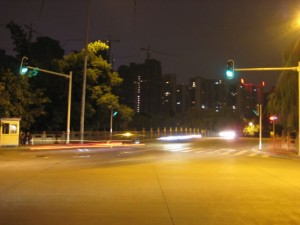Lunar Shuttle Experience
Perhaps some of you might not be aware of my experience commuting to the moon…
“Flight 744 to Stevinus Crater is now boarding at Gate 52“. Damn! The Starbucks line is snaking its way all the way down the departure hall corridor of alternating red, grey, and blue colored carpet tiles, meaning there’s not a chance in hell of grabbing a decent coffee before departure. “If they can put a man on the moon, why can’t they…” went the old lament. And yet now we have whole colonies on the moon, more people settling in there with every passing week, and the airlines still seem utterly incapable of serving anything north of a watery mixture resembling that churned out by hotel in-room Folger’s packets.
Sheesh. What an ingrate I must sound like! Complaining about the beverage choices on a lunar shuttle flight. It wasn’t always this way. When regular air travel to the moon began, and I was hired on to help install the wireless internet in the southeast quadrant of the sunny side, I jumped at the chance, never giving even a moment’s thought to the in-flight service. As it must have been for those on the early transcontinental airplane flights, the thrill of being a pioneer, able to do what most could only dream of, was reward enough. Who cared whether they served Duck à l’Orange or stale peanuts.
Oh, but the quacking bird was on the menu. The exorbitant ticket prices had to be justified somehow, even if most were purchased by passengers’ employers or unpleasantly rich tourists, and so feasts were impeccably assembled and served. Once we were out of Earth’s atmosphere, that is. As no doubt you’ve heard, flying to the Land of Green Cheese isn’t quite like a traditional airplane flight. Much energy must be expended to escape the clutches of gravity, and so the first half hour or so can be quite unpleasant, as we are all squeezed into our narrow polyester-blend seats, two-by-two, lying back at a near-80º angle, strapped in with multiple belts – covering our laps, shoulders, feet, and head – as the vehicle accelerates to 40,000 km per hour, all while g-forces pull our cheeks and our lower lips down towards our toes.
And then, bam! We’re free. Or almost. “The captain has requested that while seated, you keep both your lap and shoulder straps fastened, in case we need to evade any unforeseen meteorites.” At which point the young, good-looking attendants (the program was too new to be a slave to union seniority rules) would pass out these most tasty mooncakes; not the hockey puck-shaped sweets of fruitcake consistency enjoyed (in the most non-literal sense) by Chinese around the world at the time of the autumnal equinox each year, but instead something half way between birthday cake and muffin, a morsel of semi-sweet goodness formed to appear like a moon rock. Sure, it was kitschy, but I always looked forward to their arrival, and the knowledge that these were just a few minutes from my taste buds made getting through the difficult phase of the flight that much more palatable.
They were always tastier on the way up than on the way back down, though, since just as Chinese fortune cookies aren’t produced in China, the “mooncakes” were baked not on the moon but in the facilities of LSG Sky Chefs at Los Angeles International Airport and stored on board in warming drawers that, by the time of the return flight, had dried them out to the point where they were only barely more edible than a three-day-old pumpernickel bagel. Of course, with the lesser gravity of the moon, the journey home was not nearly as trying and so the mooncake as pacifier was less of a necessity. Following that favored snack of shuttlers was the exquisite meal service; exquisite in presentation if not necessarily in taste, complete with cloth napkins, real silverware, and more courses than you could count. A food coma induced sleep would undoubtedly follow, and the soft parachute-assisted landing was barely perceptible, followed by an agonizingly long docking and pressurization routine.
These days, the mooncakes are gone, as is the Frenchified poultry and fresh-faced flight crew, as lunar shuttle flights, while still economically out of reach of the common man, have become routine enough to attain the status of, if not a Greyhound bus with solid-fuel rocket boosters, perhaps a double-decker Megabus with free Wi-Fi and onboard lavatory (with solid-fuel rocket boosters). It’s easy to think these trips are nothing special, so I must constantly remind myself how fortunate I am to be able to take such a journey, not once, as many would give their left kidney for, but every few months for many years, even if after I arrive I’m performing the fairly routine work of tracking down intermittent network connectivity problems with a wireless spectrum analyzer and time-domain reflectometer.
 Comments(0)
Comments(0)